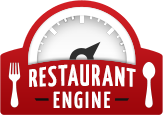How To Start a Restaurant on a Budget

However, the start-up capital required to start a restaurant relatively comfortably is enormous. From the expensive fitting of appliances in your kitchen, the heart of the restaurant, to the staff uniforms that are presented front-of-house with the beaming smiles, everywhere you look you have start-up expenses. It’s no wonder budding entrepreneurs are trying ever more desperately to find ways to start a restaurant on a budget. Today, we’re sharing our ideas to including advice inspired by a friend with her own restaurant dream.
Choose Your Location Wisely
It’s very easy to think a restaurant in the heart of downtown will have a better chance of success. But success is measured not by the amount of customers that come through your door, or pass your window, but by the profit those customers generate. And that means you have to carefully consider your expenses, with your location and building premises probably being one of your highest recurring expenses, it might make more sense to pick a quieter location, still close enough to downtown to entice customers, but far enough out to benefit from lower recurring fees.
You may also wish to look for a building that has previously been used as a restaurant. These are high sort after, but if you manage to find one you’ll find your setup costs reduce dramatically as improvements such as plumbing and ventilation may already be installed. Look out for restaurants you know are closing, but be fast. Chances are there will be many others after the same space, so be proactive by speaking with landlords before the previous restaurant has terminated their lease.
Learn to Barter and Negotiate
While you’re going to be hiring plenty of experts to complete specialist jobs such as plumbing and electric wiring, you’re also going to have a bunch of jobs you can do yourself. You can paint the walls. You can install kitchen units. You can complete the interior design of the front-of-house. Write a list of jobs and decide carefully which you can and cannot complete yourself.
Remember, there’s no harm in trying to negotiate on price. The worst they can say is “No”
While you may struggle to barter with labor specialists such as plumbers, you’ll also need to buy lots of products including restaurant tables, kitchen units, appliances, staff uniforms and marketing products such as flyers and signs. All these things can and should have a negotiated price. It’s standard practice for many areas of business to add 10-20% on to any price to allow themselves breathing space, so chances are you can knock them down 10-15% and you both walk away happy. Remember, there’s no harm in trying to negotiate on price. The worst they can say is “No”.
Use Seasonality to Your Advantage
Buying goods out of season results in high import costs. These costs translate down to you. By ensuring you change your menu to coincide with the season, you not only make more profit from each dish, you also provide a thoughtful menu for customers who like to know they’re eating good quality, in-season products, be it the middle of Winter or the height of Summer. It also keeps the menu fresh, enticing customers to come back time and time again. If you’re not sure what is currently in season, speak with your chef or visit the Eat The Seasons Web site.
Buy Locally Where Possible
By buying locally, you’re not only catering to what the modern diner wants, you also stand a much better chance of building relationships with food suppliers, resulting in better discounts in future. Chances are, many of your suppliers will also come to you to dine knowing it is their food that is on the menu. With low transport costs, low processing costs and a feel-good factor for your customers, buying locally makes perfect sense.
Invest in a Web site
A Web site is an investment, not an expense. A good Web designer will always talk about your return on investment once they have launched your Web site, and with such a low start-up cost it won’t be long until you have a healthy ROI. Whether you use your Web site as a digital brochure to showcase photos of your food and provide a phone number, or if you use it to book tables interactively, your Web site will supply a single point of contact for customers and be your street-side window to an audience of thousands.
Advertise for Free using Social Media
Using social media, be it Facebook, Twitter or Google+, to advertise your Web site is not only free but has the potential to get your business name in front of thousands of targeted people. Why not run a social media competition to name your new restaurant? Then have a grand opening, announcing the winner of the competition and your new restaurant name, and offer 20% off for every social media user who dines with you that evening. We have lots of tips about promoting your Web site via social media throughout our blog.
Whatever your budget for starting your restaurant, we wish you the best of luck, and we’ll be here providing help and advice every step of the way!


very useful. thanks..راهبند اتوماتیک